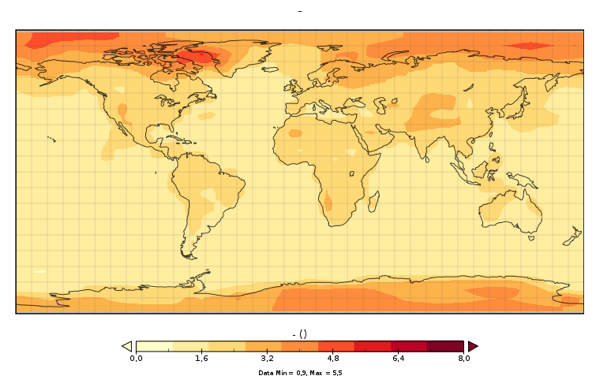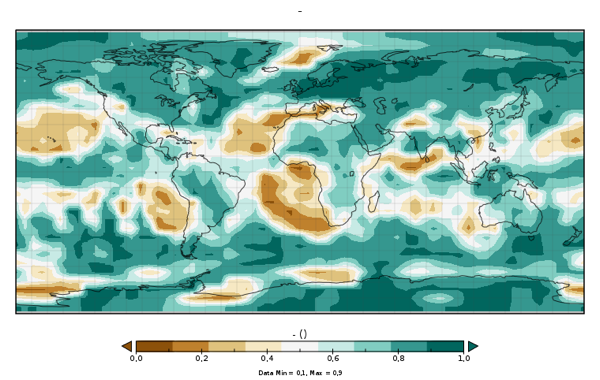Scenario 11: Only 2050 Target
Context
The scenario represents a late international agreement, reached only in 2050 and following the general recommendations of the G8 as regards 2050 emissions. However, contrary to scenario 10: CPH Plus, no mitigation efforts are implementation before this date. This scenario helps understanding the consequences of a delay in emission mitigation.
Climate

Please note that results below from GENIE are relative to 2005. In average, the temperature change relative to pre-industrial is 0.76 degrees higher.


+ SAT warming average in 2105 relative to 2005
+ SAT warming standard deviation in 2105 relative to 2005
+ SAT warming average in 2050 relative to 2005
+ SAT warming average in 2030 relative to 2005
+ Probability of a precipitation increase (in %)
Techno-economy analysis (long term)
As mentioned in scenario 10: CPH Plus, the 2050 targets correspond to a reduction of emission by 43% in 2050 with respect to 2005. Long-term CO2 prices remain close to the prices observed in scenario 10, but are slightly lower, mainly reflecting the availability of a higher potential for emission reduction since the latter starts later compared to the previous scenario.
The behaviour of the energy system after 2050 is very close to scenario 10: CPH plus since emission targets are the same from 2050 (more details are provided in the description of results of scenario 10). The only difference concerns a higher contribution of coal power plants with CCS in the current scenario (and lower contribution of renewable power plants) in the long-term, explained by the later starting of operation of these plants, hence a higher availability of sink potentials in the longer term.
+ Combination with a long-term climate target: One interest behind this scenario is to evaluate if a long term temperature increase below 2°C remains feasible if mitigation efforts are delayed until 2050. For this purpose, it is assumed that an international treaty involving the perfect cooperation of all countries is found and applied from 2055: all countries cooperate and mitigation efforts are done where they are more efficient. In other words, a first-best policy is applied from 2055. In this case, the 2°C cannot be respected, given the mitigation options available in the model. The smallest feasible temperature increase would be around 2.15-2.20 °C. At the contrary, the 2°C target is possible when the Copenhagen Accord is applied before the 2050 targets (scenarios 10 and 13). In other words, early action is required: deep reductions only from 2050 are not enough given the temporal dynamics of the climate and the mitigation options available in the model.
+ Cost of the strategy: Net present value (NPV) of the cost of the strategy given as a % of the NPV of the GDP cumulated over the century: 0.711%
Emissions
+ Emissions of CO2, CH4 and N2O in GtC until 2105
Energy / Technology
+ Cumulative sequestrated carbon in geological sinks: 388 GtC
+ Primary energy (assuming FEQ=1 for non fossil energy) in EJ
+ Electricity generation in billions of kWh
+ Energy consumption by end-use sectors, including non-energy purposes in EJ

